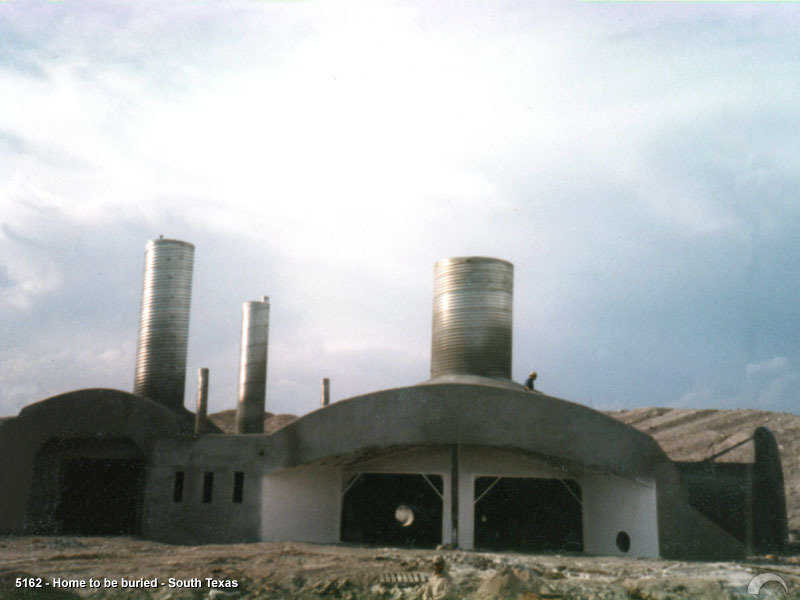Building a Fallout Shelter
In 1986 John Ayers of Presidio County, Texas became concerned about nuclear fallout from a dropped bomb. He wanted to be safe and asked me to build an underground house for him, which we did in the late summer of that year. Shown here is a picture of John’s domes just before they were covered with earth.
This is quite a story. John had no electricity onsite and didn’t want any. He wanted to be off-grid – in hot, rural Texas. We had to take advantage of earth cooling, but we could not ignore the lessons learned in not insulating underground houses.
As you can see, the largest pipe is 10 feet in diameter and 15 feet tall. You can get an idea of the size by noting the man sitting along side. This is the vent for the main room. The vertical pipes have skylights on top. Those skylights are hinged on one side and equipped with a raising device on the other. They can be raised a small amount or a large amount to let air vent up from inside the house and out. The five domes are all interconnected.
In the picture, you can also see the hillside behind the domes. This hillside was pushed back by a D8 Caterpillar to make room for the domes. After the domes were completed and after the man got down,that same D8 Cat was used to cover the domes. The domes in the forefront are covered with about 12 feet of dirt. The farther back domes have almost 30 feet of dirt on them. The vent pipes are light pipes from the skylights. The interior surface of the vent pipes was painted white so the light would reflect down into the building.
Also seen in the picture is a 2-foot-diameter pipe opening in the back of the large dome. That pipe is connected to a 3-foot diameter pipe that goes around the backside of the dome, buried some 35 feet in the ground. The 3-foot pipe has a screened opening allowing air to come in from outside. Individual buildings are connected to the 3-foot pipe by 2-foot pipes as shown in the picture.
Thus as the skylights are raised, air flows into the structure, from the outside, through the buried pipe and out the top through the vents. The amount of airflow is controlled by the occupants by simply opening or closing the vents. The incoming air was cooled by the 55-degree ground surrounding the inbound 3-foot pipe, even in the super hot Texas summer. Air that came through the pipes was cooled to the point where it dropped its excess moisture. Pipes are drained so moisture will not build up in the bottoms of the pipes, solving another problem.
When cool air come out of the pipes into the rooms, it mixed with the interior air; the humidity was then averaged at a very moderate number.
To view the full article about Monolithic bomb and fallout shelters click here.
